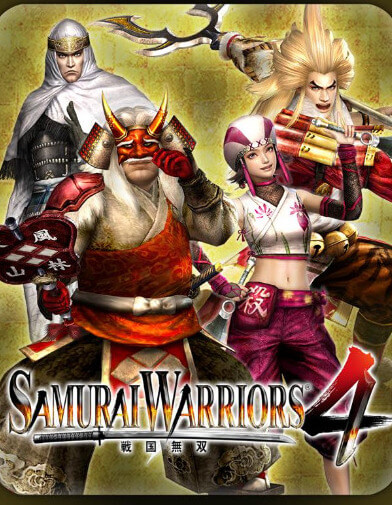


Story Mode is also revamped it no longer uses the traditional story-per-character format from previous games and instead feature ten stories based on clans and regions during the Sengoku period, akin to the kingdom-based story mode implemented in the recent Dynasty Warriors games.Įach stage offers a selection of playable characters for the player to use according to their participation in the battles consequently, some characters do not appear in the story, although they still appear in the aforementioned Chronicle Mode.Īll of the stories lead to two separate stories: the "Unification", which mainly tells the conquest of Hideyoshi Toyotomi in uniting Japan as well as the conflicts between the Eastern and Western armies after Hideyoshi's death that leads to the Battle of Sekigahara and the extermination of the Toyotomi clan and the "Sanada" story, which tells a parallel story with Unification but has a more personal insight with the Sanada clan. Custom characters can also be played in the new "Chronicle Mode", where players can take requests for their custom generals. The create-a-warrior mode is retained it features much more expansive content, including the addition of two weapon movesets from the male and female protagonists from Samurai Warriors: Chronicles in addition to the three from previous games. Duels are featured, which occur when player-controlled characters meet with enemy officers under specific conditions. Rage Mode renders the player invincible for a period of time, and also enhances the player's attacks as well as empowering their Musou attack by using the Spirit Gauge. Hyper Attacks is a secondary moveset available to all characters that allows the player to sweep through and clear out crowd of enemies with a dashing animation, although it is useless against enemy officers, as they will either deflect it or are otherwise immune against it. Two new moves, "Hyper Attacks" and "Rage Mode" are featured in this game: The game features a character-switching feature, similar to the spin-off, Samurai Warriors: Chronicles, with which players can take two characters into battles simultaneously, and freely switch between the two. A second expansion, Samurai Warriors 4: Empires (戦国無双4 Empires Sengoku Musō 4 Empires) was released in Japan on September 17, 2015, and in North America and Europe in 2016. It was also released in North America on October 21, 2014, and Europe on October 24, 2014.Ī revised version, Samurai Warriors 4-II (戦国無双4-II Sengoku Musō 4-II) was released on February 11, 2015, in Japan and was released in North America on September 29, 2015, and in Europe on October 2, 2015, but it does not contain the original stories from Samurai Warriors 4. The PlayStation 4 version port followed on September 4, 2014. The first promo of Samurai Warriors 4 was revealed on December 7, 2013.

While the game was confirmed to be in development for the PlayStation 3 as early as 2012, it was not until the SCEJA Press Conference in September 2013 that the game was officially announced, with a version for PlayStation Vita in addition to PlayStation 3, and was released on March 20, 2014, in Japan. The game was made to celebrate the tenth anniversary of the series. Unlike past Samurai Warriors games, this one only has Japanese voice overs. Samurai Warriors 4, known in Japan as Sengoku Musou 4 (戦国無双4), is a hack and slash game by Koei Tecmo, and sequel to Samurai Warriors 3.


 0 kommentar(er)
0 kommentar(er)
